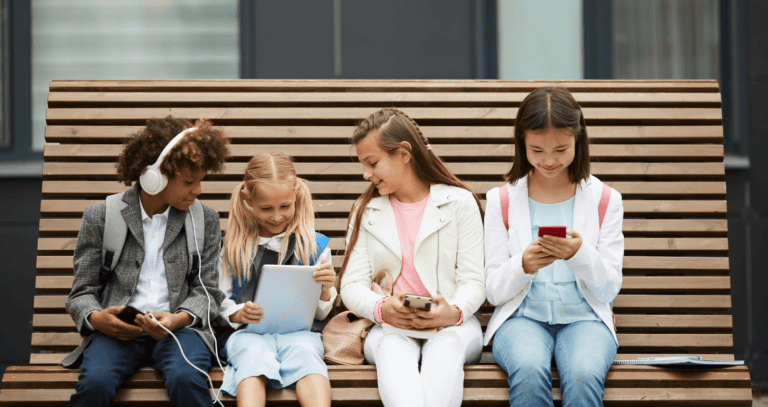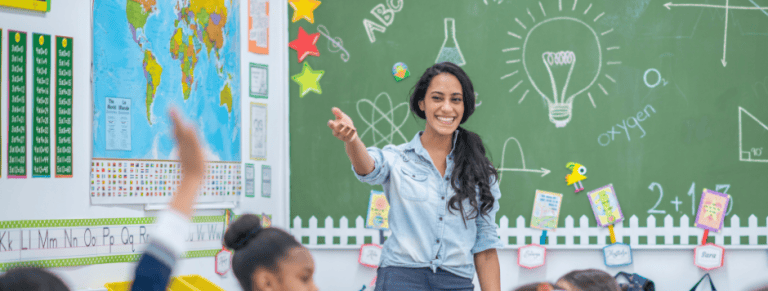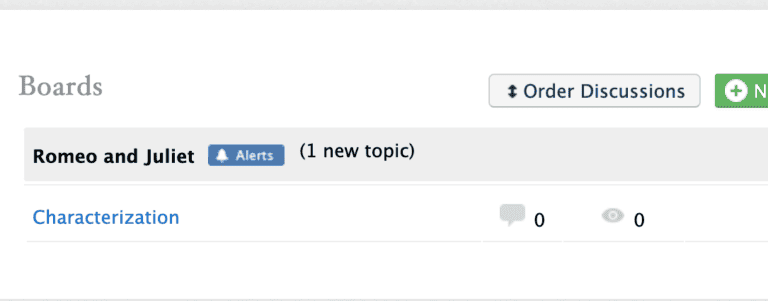4 Challenges Gen Z Learners Face This School Year
Kids these days. Adults have been shaking their heads and repeating that phrase about younger generations for…generations. It’s as true today as it ever was, and the kids of Gen Z – who’ve grown up as digital natives, during a global pandemic, at the cusp of an AI boom – can sometimes seem impenetrable to the adults who live with, care for, and teach them.
It can be easy to dismiss some of the complexities and frustrations of Gen Z students with that old “kids these days” expression, but it’s more helpful to examine and understand the many unique challenges these students face.
Today’s adolescents are facing unprecedented circumstances and stressors – on top of the age-old trials and tribulations of teenagerhood. As we move into this school year, it may be helpful for educators to keep some of the more prevalent challenges Gen Z learners face front-of-mind.
1. Multi-tasking and constant distraction
From a cognitive perspective, multi-tasking is actually task-switching. It comes with an opportunity cost – usually decreased performance or increased time spent to complete a task. Gen Z students are constantly multi-tasking – and it’s affected their attention spans. Gen Z students have attention spans of only about eight seconds – compared to 12 seconds for millennials and 24 seconds for Gen X.
It makes sense that Gen Z students are having trouble focusing, because they’re constantly engaging with apps and tools that are competing for their fragmented attention. Today’s students don’t get many opportunities to have screen-free time – and consequently, they’re constantly distracted.
The classroom is one of ever-fewer places where today’s students can have opportunities for increased focus. It’s important, thus, for educators to create space for analogue time where students can center their attention on thinking and speaking with others – and on completing one task at a time.
2. An expectation of personalization
The glut of screen time that monopolizes the Gen Z attention span has added yet another challenge to their learning: a constant expectation of personalization.
Today’s students only know a world that responds – immediately – to the choices they make. If they want to watch a movie, they can find one immediately on Netflix. If they want to watch a video, they can scroll through YouTube or TikTok. If they need or want an item, they can receive it overnight via Amazon. The algorithms that fuel their entertainment serve, in addictive fashion, those items and experiences they want in the present and those they may want in the future.
That level of personalization can make today’s students feel particularly bored or disconnected at school. Equipped with understanding, however, educators can optimize a preference for personalization with individualized goal-setting and abundant choice – in the prompts students can select to complete, the order in which they must complete tasks, and the space to narrate what they’re choosing and why.
3. Alarming mental health struggles
We’ve written before about the alarming mental health challenges today’s students face. Over half of all Americans reported feeling that no one knows them well in 2021, and 44% of high school students reported feelings of loneliness. In 2019, a third of all high school students and half of female students reported feelings of sadness or helplessness – an increase of 40% since 2009.
Today’s kids are truly struggling, thanks to heightened screen time, toxic achievement culture, the prevalence of social media, and prolonged isolation due to the COVID-19 pandemic, among other factors.
In our view, a root cause of the teen mental health crisis is a communication crisis, which is heightening their feelings of isolation, disconnect, anxiety, and depression. Kids today have lost some of the basic social skills that existed before technology took over – and in-person conversation has been a casualty of today’s digital culture. Schools are a place where these lost skills can – and must – be taught.
4. Unprecedented polarization
Friendly disputes and ideological debates have characterized school life for decades – but the polarization the current generation faces feels different. Our society has become increasingly ideologically split – and increasingly hostile to those who don’t share their views.
The result is a generation of learners who are afraid to express themselves because they fear their teachers or peers might disagree with their political views. Gen Z students live in constant far of cancellation – and what’s more, they’re not sure how to engage in real life with people whose views differ from their own, because online they can so easily scroll past opposing opinions.
Students are justifiably nervous about inserting their own opinions into such a contentious environment, but schools can – and should – be places where teens can learn civil discourse. Especially now, in an election year, students need the skills to engage in these kinds of discussions with civility and respect.
Approach Gen Z with compassion and understanding this school year
We’re keeping these challenges front of mind as Gen Z students return to campus this fall. It’s a tough time to be a kid – but it’s also an exciting time for educators to make a real difference in the personal and academic lives of their students.






